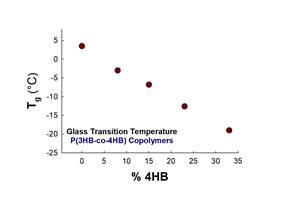Infrastructure May Prove Big Landing Spot for Recycled Plastics
As the government funds infrastructure improvements, a hot topic at NPE2024 – exploration of the role recycled plastics can play in upcoming projects, particularly road development.
For decades, plastics have proven themselves as viable materials in building and construction. Industry veterans may recall the concept house GE Plastics (now SABIC) built in Pittsfield, Massachusetts, in 1989 to demonstrate possible applications for plastics in homes.
“The plastics industry ... is in a prime position to contribute to our nation’s infrastructure needs. From improved recovery facilities to uses in pavements and pipes, plastics can play a role.”
– The Plastics Industry Association, Producer of NPE2024
This model suburban home showed liquid crystal plastic windows that could change from transparent to opaque at the flick of a switch. Cutaway cross sections showed possible plastic construction concepts, including modular plumbing panels and snap-on plastic wall sections.
Today, of course, plastics is a staple in construction, used in plumbing, decks, windows, siding, fencing and a lot more.
Lurking, though, is a new opportunity in which two burgeoning opportunities converge: infrastructure development and recycled plastics. Passed in 2021, The Infrastructure Investment and Jobs Act earmarks $550 billion over fiscal years 2022 through 2026 in new federal investment in infrastructure projects that include roads, bridges and mass transit, water infrastructure and broadband.
As the Plastics Industry Association points out, “The plastics industry ... is in a prime position to contribute to our nation’s infrastructure needs. From improved recovery facilities to uses in pavements and pipes, plastics can play a role. The infrastructure policies we advocate for create jobs, protect the environment and improve our daily lives.”
VISIT: The NPE2024 Recycling & Sustainability Zone
More on pavements: Research is underway to determine whether recycled plastics can play a role in some upcoming infrastructure projects, particularly road development. According to an article in FastCompany.com, multiple states are testing whether asphalt roads mixed with discarded bags, bottles and other reclaim can make pavement last longer, save money and reduce the amount of waste that ends up in landfills. The article noted that in Missouri a pilot program is being conducted on a busy highway made of asphalt mixed with pelletizing bottle flake, and that California is testing a road made of a mixture of asphalt and 10% scrap from printer cartridges.
Meantime, in a white paper commissioned by the National Academies of Sciences, Engineering, and Medicine (NASEM), Stanford University engineers engineers Michael Lepech and Zhiye Li studied the current status, challenges and needs of recycling plastics in a circular economy, and examined the long-term durability and environmental costs of doing so for use in infrastructure.
Notes Li, in an article that appeared on the Stanford University website, “Upcycling of recycled plastics in infrastructure sets an example of creating value by creating demand. The recycled plastic-blended construction material needs to achieve certain performance requirements and maintain lower environmental impacts than conventional construction materials. Our paper shows that for a use case that has a longer life span — such as certain blended plastic composite building panels or asphalt pavement — the needed quality and sustainability requirements are more achievable. Upcycling plastic waste in infrastructure has attracted increasing interest because it creates something of high value for which there is large potential demand.”
Last year, meantime, Recycling Today reported that the National Academies of Sciences, Engineering and Medicine issued a report in which it recommended how the Environmental Protection Agency and the Department of Transportation join forces to promote and sustain a coordinated government response to end-of-life plastics in the U.S. that includes assessments of using recycled plastics in infrastructure.
Related Content
Film Extrusion: Boost Mechanical Properties and Rate of Composting by Blending Amorphous PHA into PLA
A unique amorphous PHA has been shown to enhance the mechanical performance and accelerate the biodegradation of other compostable polymers PLA in blown film.
Read MorePregis Performance Flexibles: In the ‘Wow’ Business
Pregis went big and bold with investment in a brand-new, state-of-the-art plant and spent big on expanding an existing facility. High-tech lines, well-known leadership and a commitment to sustainability are bringing the “wow” factor to blown film.
Read MoreHow to Extrusion Blow Mold PHA/PLA Blends
You need to pay attention to the inherent characteristics of biopolymers PHA/PLA materials when setting process parameters to realize better and more consistent outcomes.
Read More‘Monomaterial’ Trend in Packaging and Beyond Will Only Thrive
In terms of sustainability measures, monomaterial structures are already making good headway and will evolve even further.
Read MoreRead Next
Advanced Recycling: Beyond Pyrolysis
Consumer-product brand owners increasingly see advanced chemical recycling as a necessary complement to mechanical recycling if they are to meet ambitious goals for a circular economy in the next decade. Dozens of technology providers are developing new technologies to overcome the limitations of existing pyrolysis methods and to commercialize various alternative approaches to chemical recycling of plastics.
Read MoreUnderstanding Melting in Single-Screw Extruders
You can better visualize the melting process by “flipping” the observation point so that the barrel appears to be turning clockwise around a stationary screw.
Read MoreTroubleshooting Screw and Barrel Wear in Extrusion
Extruder screws and barrels will wear over time. If you are seeing a reduction in specific rate and higher discharge temperatures, wear is the likely culprit.
Read More


















 (2).jpg;maxWidth=300;quality=90)








